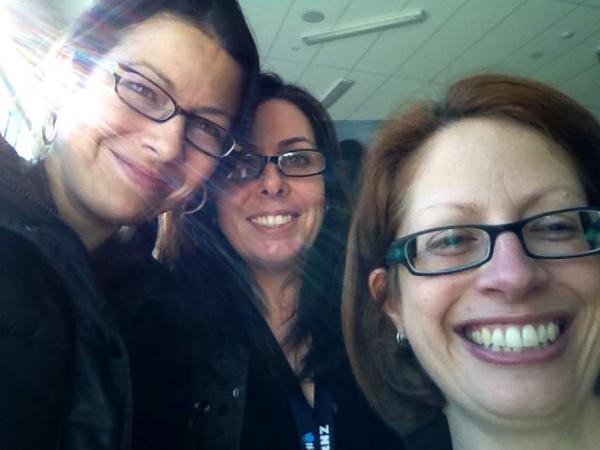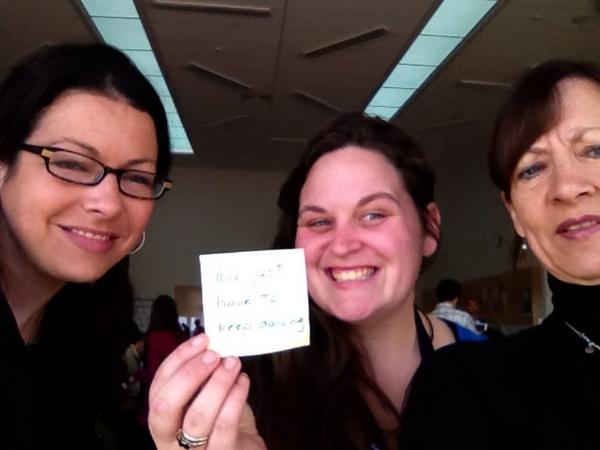2010 was transformational for me. I noticed & connected with SOLO Taxonomy (Biggs & Collis,1982) thanks to the outstanding
+Pam Hook @arti_choke
I
noticed it because I HAD to - I was expected to help lead a curriculum that was underpinned by it!
I
connected with it because I HAD to - once I experienced the 'lightbulb' moment, I couldn't ignore the beam! SOLO made sense. It's learning! The world and all learning experiences around me began to be translated into rubrics. The learning process became so visible!
I have my own inquisitive, thoughtful young learner, who is my greatest teacher too; who delights and inspires me every single day.
I teach early years learners (Year 0/1)
I wondered:
When, during my own life, was I exposed to the greatest amount of new experiences?
Aren't our youngest children
so experienced at exploring their world?
Opening their eyes, noticing the world, creating connections with those around them... Discovering how to make their body move in different ways, learning that certain actions invoke reactions from those around them... Exploring with their senses, touching, smelling, tasting... First days at Kohanga Reo, kindergarten, playcentre... Then school... It's all new!
I started asking questions. Lots of questions! Of myself, my practice, my pedagogy, (which I have always identified as a 'work in progress')
"Why", "but why", and probably most importantly, "why NOT?"
Doesn't that sound like it's straight out of the mouth of a 2 year old?
Q. How often did I talk with my learners about 'what' they were 'doing'? A. Quite a lot.
Q. How often did I talk with my learners about how they are 'doing' it? A. Less often.
Q. How often did I talk with my learners about where else they might 'do' this? A. Less often again.
How often did I 'simplify' words to 'help' my early years learners understand something that adults perceive to be too difficult for them to understand?
Pam profoundly spoke at Learning @ Schools in 2010 about dinosaurs and pokemon; if a young child can manage the words Tyrannosaurus Rex, why shouldn't we expect them to use the correct learning verbs?
As a younger learner, I think I missed that week at school when we changed 'Let's write about...' to 'Write a detailed analysis of...' Detail - fine, analysis - huh?
I loved writing, but I always seemed to find a 'C' or at best a 'B' on my paper! I didn't know HOW to improve; how to keep that B, or turn it into an A! I thought it was just the luck of the draw. I felt like I tried hard. I wrote my notes, regurgitated facts, lots of them. Some kids were just 'Smart'. Insight about SOLO and Mindsets now explains for me exactly where I was going wrong!
My Learning Outcomes were at best Multistructural. I had my facts, but I wasn't aware of how to connect them or when I was connecting them, let alone applying them to an overall understanding or new context. It wasn't about me, it was about HOW I was learning and representing it. It wasn't about lack of effort, it was about
misguided effort.
SOLO Taxonomy labels the learning, not the learner, but even better, the learner can identify their very next step in order to improve the learning.
WHAT IF I taught my learners to notice the HOW of learning from DAY 1 at school?
Help to make the learning process VISIBLE so they could apply it to learning anything?
What if I VISIBLY learned with them? We are all learners, right? We all have Prestructural understandings about things, we all have Extended Abstract understandings too, and I'm sure some talent IS natural, but isn't there always room for more learning? I don't see Extended Abstract as a finite end - it could be depending on the learning goal, but it could be the beginning of the next goal too.
2014
What if I made my own learning VISIBLE beyond my classroom?
Thanks to
+Sonya Van Schaijik #edchatnz meme challenge, I had to, now because I have enjoyed this, I want to.
I find SOLO is so cleverly simple, but can be made as complex as the learning intention requires it to be!
If you need to find out more about SOLO Taxonomy as I did - your next step must be toward our own NZ guru
http://pamhook.com/
SO now I'm Visibly Learning with my Early Years Learners, and in the Early Years of my own Next steps...
Now I'm visibly sharing too!
Next Step: Write a shorter blog! :-)





